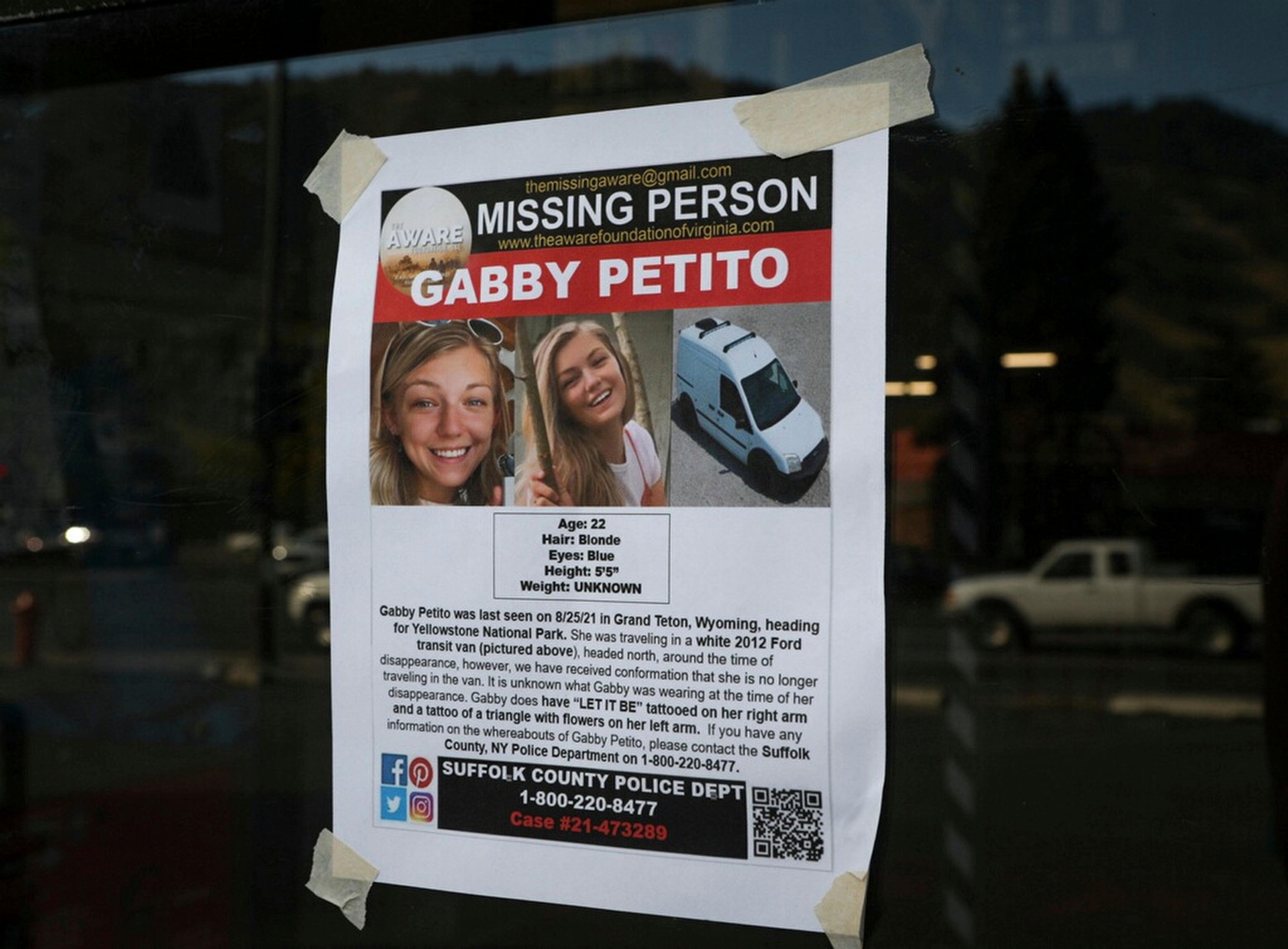The intense interest in Gabby Petito’s case highlights how missing women of colour are so often forgotten
Thousands of women of colour, especially Native American or Indigenous women, go missing in America and Canada every year, a phenomenon which receives little if any attention, writes Borzou Daragahi


By now, you would have to be living in a remote corner of the solar system not to have heard of Gabrielle (“Gabby”) Petito. The 22-year-old American woman was on a summer road trip with her fiancé when she was reported missing. A body that matches her description has been found in the woods of Wyoming. Her fiancé, Brian Laundrie, is now on the run.
Given the amount of breathless, non-stop news coverage of the case, you’d think a young woman going missing and being found dead and possibly murdered was rare in North America. Sadly, it is not at all. Thousands of women of colour, especially Native American or Indigenous women, go missing in America and Canada every year, a phenomenon which receives little – if any – attention.
A 2018 report by the Urban Indian Health Institute logged more than 5,700 cases of missing Native American women and girls in 2016. Another painstakingly documented report last year detailed hundreds of missing and murdered Native Americans, with incidents often taking place on tribal lands at the hands of presumed non-Indigenous killers and abductors, with law enforcement often ignoring the cases or blaming the victims.
According to the Department of Justice, Indigenous women are murdered at a rate 10 times higher than other women. It has been called “a generations-long silent epidemic” by the Sicangu Community Development Corporation, a nonprofit serving the Lakota communities of South Dakota.
It’s a tragedy what has happened to Petito, and buried within the narrative are weighty themes about mental health, domestic violence, and the disparities between polished social media fantasies and gritty real life in the Instagram era.
Her case needs covering – as did Sarah Everard’s, which also received much press attention. But what is striking is the differing levels of coverage between these cases and others.
Yours,
Borzou Daragahi
International correspondent



Join our commenting forum
Join thought-provoking conversations, follow other Independent readers and see their replies
Comments